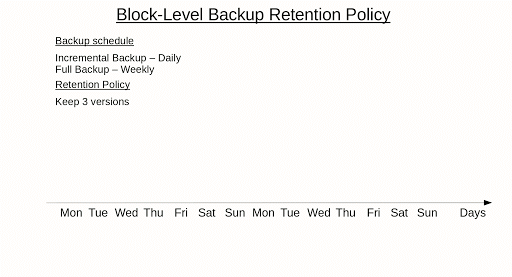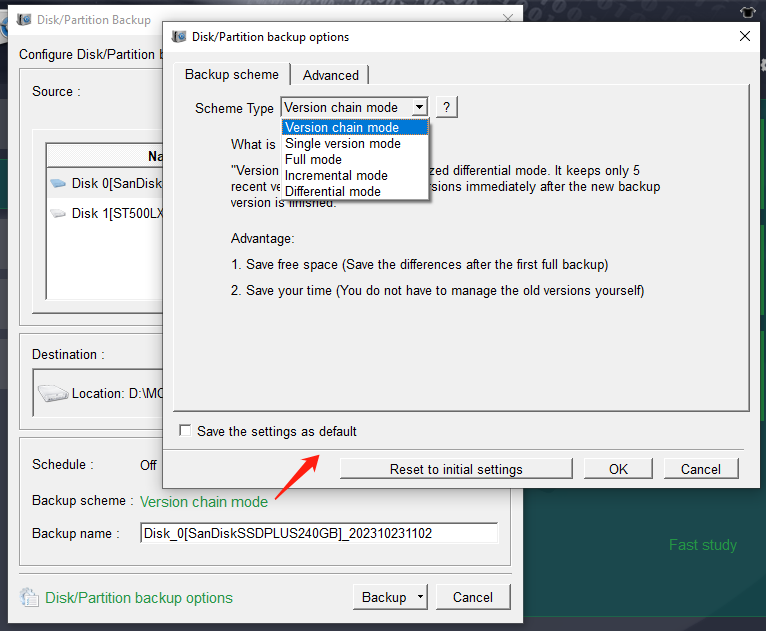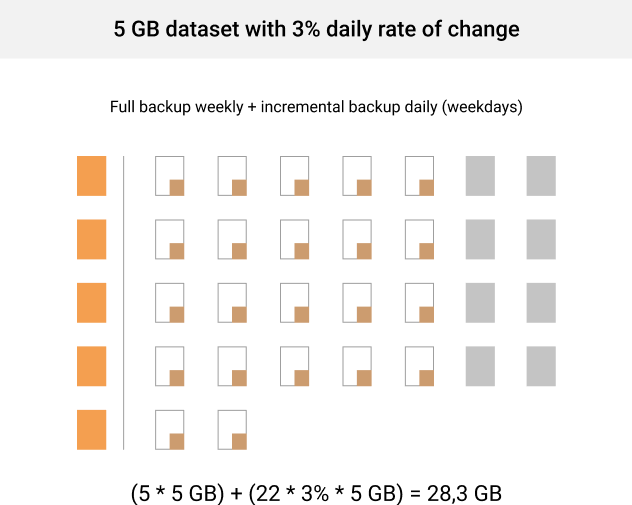Deep Dive: What is Incremental Backup?
- Home
- Support
- Tips Data Backup
- Deep Dive: What is Incremental Backup?
Summary
Incremental backup is a method that saves storage space and reduces bandwidth by only backing up data that has changed since the last backup. Unlike full backups, which copy all data every time, incremental backups start with a full backup and then only capture changes made since the last backup. This approach helps optimize backup routines, making them more efficient and cost-effective.


Quick Backup files at up to 3,000MB/min.
Fullfill different backup needs Supports system backup, disk / partition backup, file backup and disk clone.
Intelligent Automatically analyze the differences between source and backup data.
Convenient Support VSS, allowing to freely view webpages when backing up system.
Highly compatible Supports various files and storage devices.
Quick Backup files at up to 3,000MB/min.
Fullfill different backup needs Backup for disk, partition and system. Save disk space by backing up incremental /differential data.
Highly compatible Supports various files and storage devices.
- Version chain mode: Only the latest 5 versions are kept, and useless old versions are automatically deleted after the backup is complete.
- Single version mode: Only the most recent version is kept, and the previous version is automatically deleted after the backup is complete.
- Full mode: Create a full backup.
- Incremental mode: After the initial full backup, only incremental backups are created.
- Differential mode: After the initial full backup, only differential backups are created.




- Longer data restore: It takes more time for backup software to find, analyze, and collect the latest full backup and all subsequent incremental backups.
- Less data consistency and reliability: When you need to recover, the backup software analyzes the whole backup chain. If one element in that chain is corrupt, your data is non-recoverable.

Automatic 4K alignment Improves SSD performance during system migration.
Support GPT and MBR Automatically adapt to the suitable partition format.
Support NTFS and FAT32 Redeploy various files in different file systems.
Back up quickly Back up files at up to 3,000MB/min.
Overall backup schedule Support system redeployment/system backup/partition backup/disk backup/disk clone.
Automatic 4K alignment Improve SSD performance
Support GPT and MBR Intelligently adapt to a partition format
Support NTFS and FAT32 Redeploy files in different file systems
Free TrialFree TrialNow 2000 people have downloaded!Relate Links :
Backup Files to Google Drive: A Step-by-Step Guide
25-04-2024
Ashley S. Miller : Learn how to backup to google drive, one of the best cloud backup tools available. Read on to...
Fast External Hard Drive Backup - Your Ultimate Guide
29-06-2024
Ashley S. Miller : Regularly perform external hard drive backup to prevent data loss. Follow our tips for effective data protection. Start...
How to fix the problem that Windows 10 settings won't open?
19-05-2024
Ashley S. Miller : Discover practical solutions to tackle the widespread challenge of Windows 10 settings not opening. Dive into our guide...
How to fix Windows 10 error code 0x800704CF without losing data?
01-08-2023
Amanda J. Brook : Windows Store cannot log in and download, and the error code 0x800704CF appears. How should I solve it?...




